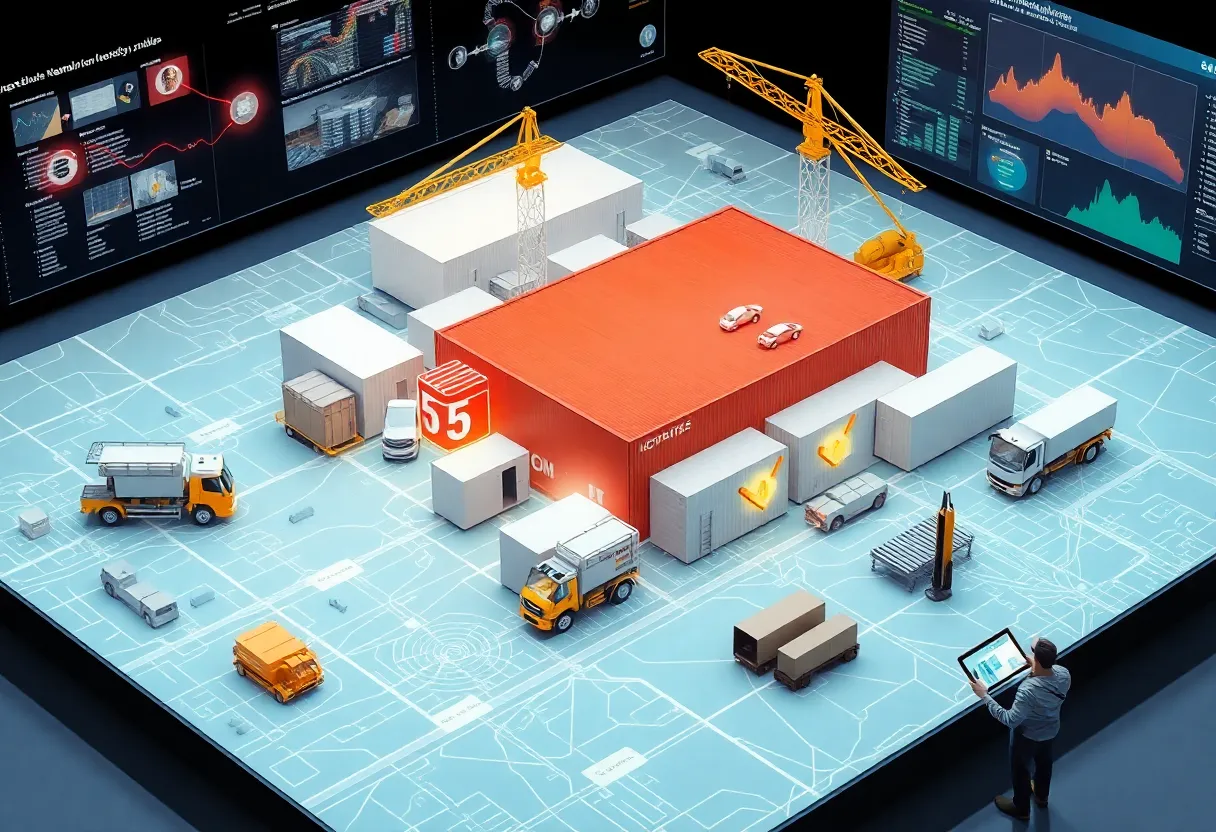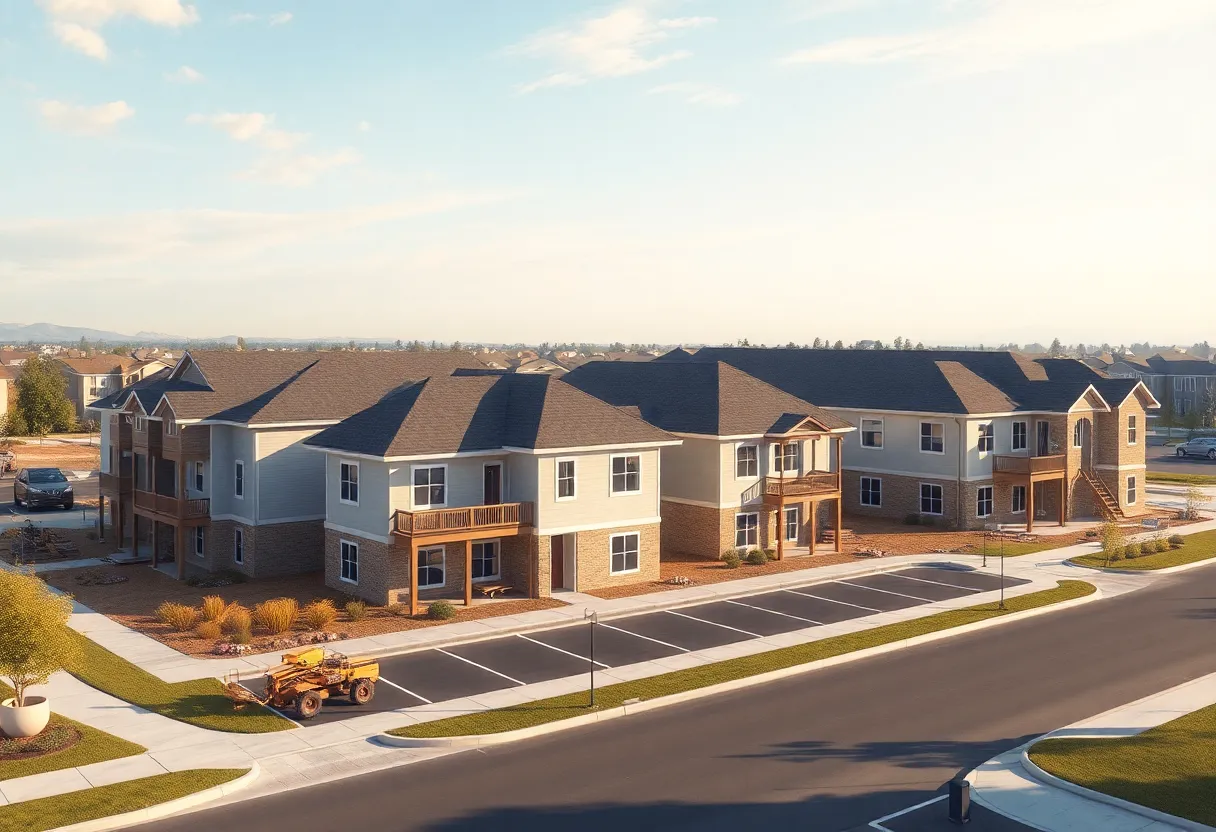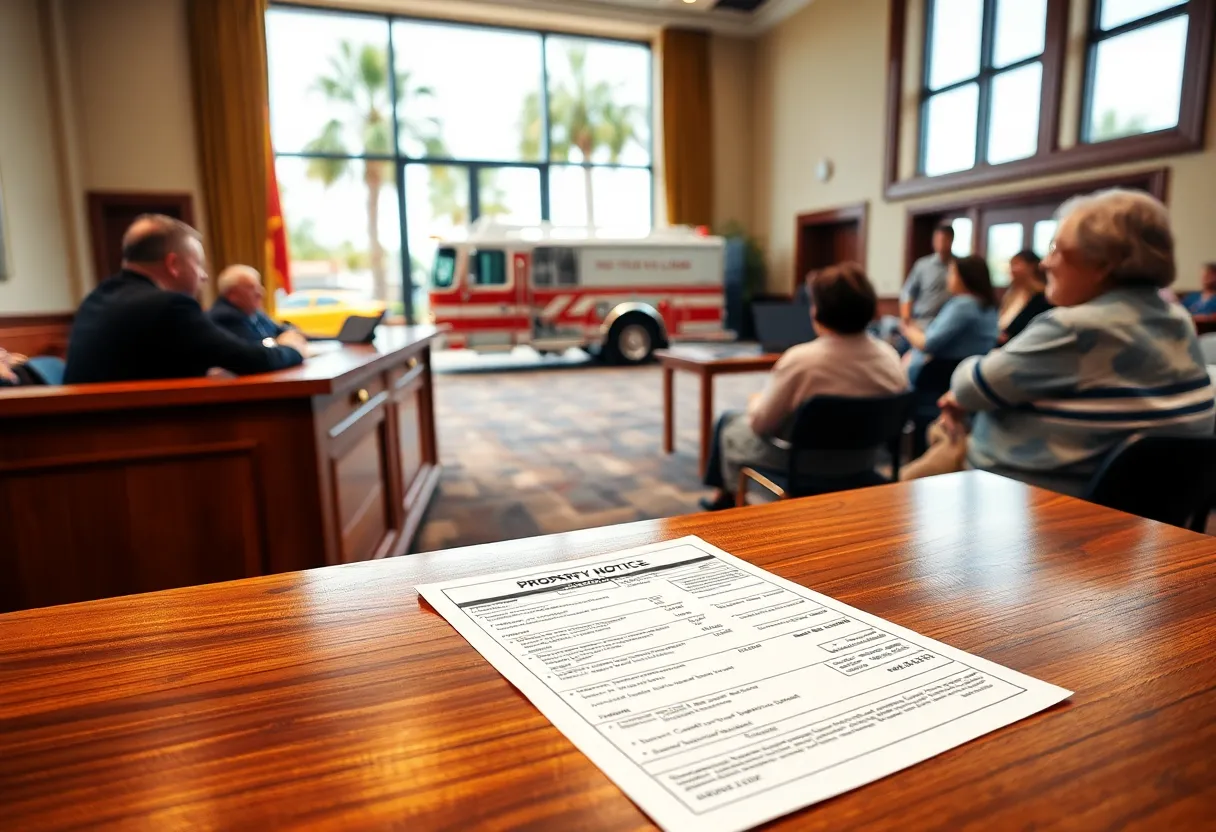Hanyang University ERICA, South Korea, August 19, 2025
News Summary
The researchers at Hanyang University ERICA’s School of Architecture & Architectural Engineering developed a digital twin-enabled facility management system (DT-FMS) for relocatable modular buildings (RMBs). The DT-FMS integrates BIM, IoT and GIS to create a live digital replica that supports real-time monitoring, logistics simulation, lifecycle performance analysis and reuse planning. A case study on a relocatable modular school in South Korea demonstrated improved module distribution, higher reuse potential, better management efficiency and potential reductions in operating costs and energy use. Organized into physical, digital and service layers, the platform enables data-driven decisions across design, transport, setup, operation and circular-economy reuse.
Hanyang University ERICA develops digital-twin facility management system for relocatable modular buildings
The School of Architecture & Architectural Engineering at Hanyang University ERICA has developed a digital twin-enabled facility management system designed specifically for relocatable modular buildings (RMBs). This integrated platform links BIM, IoT, and GIS to support real-time monitoring, performance analysis, and logistics simulations throughout an RMB’s lifecycle. In a focused case study, a relocatable modular school system in South Korea demonstrated improved decision making on module distribution and reuse, with indications of lower operating costs and better energy efficiency linked to more efficient logistics and module management. The work was published in Volume 176 of Automation in Construction on 1 August 2025.
System purpose and scope
The DT-FMS aims to address the distinctive challenges of RMBs, where fast assembly, transportability, and repeated reuse can complicate management and logistics. By providing a unified digital representation of both the physical assets and their operations, the framework seeks to streamline module allocation, movement, and reconfiguration, ultimately supporting safer construction environments and reduced environmental impact.
Technology stack and data integration
The system fuses three core technologies into a single digital twin model. BIM delivers robust 3D modelling and comprehensive building information. IoT supplies real-time sensor data to track conditions, usage, and performance. GIS adds geographic context, helping to plan transport routes and locate modular units efficiently. When combined, these data streams enable real-time monitoring, performance analysis, and logistics simulations across a RMB’s lifecycle, from design and fabrication to relocation and reuse.
Architectural layers and how they operate
The DT-FMS is organized into three management layers. The physical layer provides live tracking and communication among physical components such as resources, modular units, and people involved in the project. The digital layer hosts modelling tools, data integration processes, and analytics to transform data into actionable insights. The service layer offers user interfaces for monitoring, control, and decision support, enabling stakeholders to interact with the digital twin framework and guide operations.
Case study details and outcomes
The case study applied the framework to a relocatable modular school in South Korea to test practical use. The digital twin framework supported more informed decisions about where to place, reuse, or relocate modules, leading to improved management efficiency for the school’s RMB facility. Some reports indicate potential reductions in operating costs and enhancements in energy efficiency, driven by smarter logistics and module reuse strategies.
Publication context and potential impact
The study’s findings were published in an academic journal in August 2025, highlighting how digital twin technology can deliver a digital replica of physical assets that combines real-time data and analytics to inform decision making in modular construction. Researchers emphasize the role of digital twins in promoting more circular practices—through reuse, reconfiguration, and optimal relocation of modular units—thereby minimizing waste and maximizing value across repeated project cycles.
Institutional context
The work is anchored at Hanyang University ERICA’s School of Architecture & Architectural Engineering, reflecting ongoing research into modern methods of construction, modular construction, and related digital technologies. The effort underscores the university’s broader emphasis on integrating advanced data tools with practical RMB deployment to improve efficiency and sustainability on modular projects.
| Key feature | Description |
|---|---|
| Relocatable modular buildings (RMBs) | Modular construction method using prefabricated units that can be transported and reassembled as needed. |
| Digital twin-enabled facility management system (DT-FMS) | Integrated platform that combines BIM, IoT, and GIS to support lifecycle monitoring and decision making for RMBs. |
| Three-layer architecture | Physical layer for real-time tracking, digital layer for modelling and analytics, and service layer for user interaction and decisions. |
| Data sources | BIM for 3D modelling and information, IoT for sensor data, GIS for geographic context and logistics planning. |
| Case study | Relocatable modular school in South Korea demonstrating improved module distribution, reuse decisions, and management efficiency. |
| Publication | Volume 176 of Automation in Construction, published 1 August 2025. |
| Potential impact | Supports circular economy goals by enabling reuse, reconfiguration, and relocation of RMB modules, reducing waste and costs. |
Frequently asked questions
What is the purpose of the digital twin-enabled facility management system for relocatable modular buildings?
It provides an integrated platform that combines BIM, IoT, and GIS to monitor performance, analyze operations, and simulate logistics across RMB lifecycles, supporting smarter decisions about module distribution, reuse, and relocation.
What data sources feed the digital twin in this system?
The system draws on BIM data for 3D models and building information, IoT data from sensors for real-time conditions, and GIS data for geographic context and location-based logistics.
How is the DT-FMS structured?
It comprises three layers: a physical layer for real-time tracking of components and people, a digital layer for modelling and analytics, and a service layer for monitoring, control, and decision support.
What were the outcomes of the case study on the relocatable modular school?
The DT-FMS supported better module distribution and reuse decisions, improving management efficiency and suggesting potential reductions in operating costs and energy use through smarter logistics.
Where was the study published and when?
The research appeared in Automation in Construction, Volume 176, on 1 August 2025.
Deeper Dive: News & Info About This Topic
Additional Resources
- IoT World Today: Researchers develop digital twin framework to streamline construction
- Wikipedia: Digital twin
- New Civil Engineer: Researchers develop digital twin technology for modular building management
- Google Search: digital twin relocatable modular buildings
- MSN: Digital twin system transforms management of relocatable modular buildings
- Google Scholar: digital twin modular buildings
- PR Newswire: Viavi and Hanyang University sign memorandum of understanding to advance 6G research
- Encyclopedia Britannica: Hanyang University
- Telecoms.com: Viavi and South Korean university team up to work on AI RAN, 5G and 6G research
- Google News: Viavi Hanyang 6G





